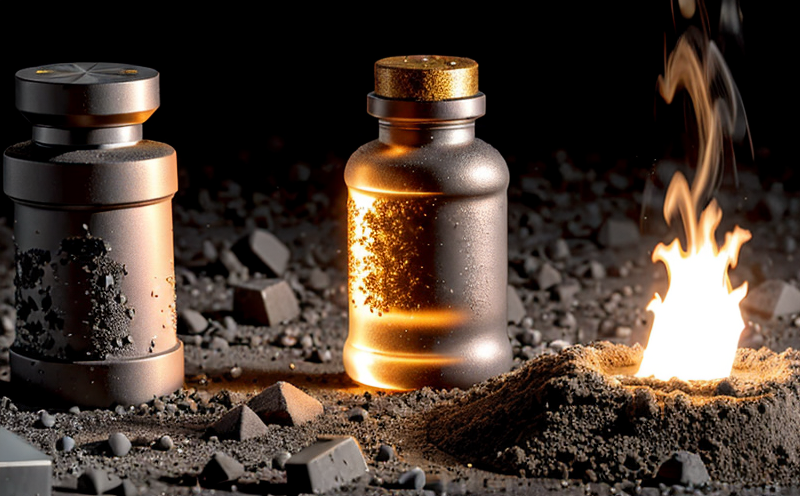ISO 16527 Monitoring Mechanical Degradation in Irradiated Materials
The ISO 16527 standard is a critical tool used to monitor and quantify mechanical degradation in materials subjected to radiation exposure. This service ensures that the integrity of materials, particularly those used in high-dose irradiation environments such as nuclear reactors, medical devices, and aerospace components, can be assessed accurately and reliably.
Radiation-induced material degradation (RMD) is a significant concern for industries dealing with high-energy particle beams or gamma radiation. The standard provides methodologies to measure changes in mechanical properties that may result from irradiation. These properties include tensile strength, impact toughness, hardness, and creep resistance, among others.
The process involves the preparation of test specimens made from the material under study. Specimens are irradiated according to specified conditions defined by the standard, which considers factors such as dose rate, total absorbed dose, and temperature during irradiation. Post-irradiation testing includes mechanical tests using precision instruments like universal testing machines (UTMs), hardness testers, and impact testers.
The ISO 16527 protocol is designed to provide a standardized approach to ensure that the results are comparable across different laboratories worldwide. This standardization is crucial for quality management and compliance purposes in sectors such as nuclear power generation, medical device manufacturing, and space exploration.
By adhering to this international standard, industries can ensure that their materials meet stringent quality and safety requirements, thereby reducing the risk of failure due to irradiation-induced degradation. This service not only aids in meeting regulatory standards but also supports the continuous improvement of product design and production processes.
- International laboratories adopting ISO 16527 ensure consistent test results for cross-border trade and collaboration.
- The standard facilitates better understanding and control over material behavior under irradiation, leading to safer designs and more reliable products.
- Compliance with this standard enhances the credibility of a company's quality management system in the eyes of regulatory bodies and stakeholders.
In summary, ISO 16527 is an essential tool for industries dealing with radiation-induced material degradation. It provides a robust framework for monitoring changes in mechanical properties, ensuring that materials used in high-risk environments are safe and reliable.
Why It Matters
The significance of ISO 16527 lies in its ability to address the critical issue of radiation-induced material degradation (RMD) in various industries. RMD can lead to significant structural changes in materials, potentially compromising their performance and safety under operational conditions.
In sectors like nuclear power generation, medical device manufacturing, and aerospace engineering, the integrity of materials is paramount. Any failure could result in catastrophic consequences, including equipment malfunctions or even loss of life. By using ISO 16527, these industries can mitigate risks by ensuring that their materials are thoroughly tested for RMD.
The standard also plays a crucial role in research and development (R&D) activities aimed at improving material performance under radiation exposure. It provides a reliable method to measure changes in mechanical properties, which is invaluable for advancing knowledge and innovation in these fields.
Moreover, compliance with ISO 16527 enhances the credibility of a company's quality management system. Regulatory bodies and stakeholders rely on consistent testing methodologies to ensure that products meet stringent safety and performance standards. By adhering to this international standard, companies can demonstrate their commitment to excellence and reliability.
In conclusion, ISO 16527 is not just a technical standard; it is a cornerstone of quality assurance in industries dealing with radiation-induced material degradation. It ensures that materials used in high-risk environments are safe, reliable, and capable of meeting stringent performance requirements.
Benefits
The benefits of ISO 16527 Monitoring Mechanical Degradation in Irradiated Materials extend across multiple dimensions, including safety, compliance, reliability, and innovation. Here are some key advantages:
- Enhanced Safety: By accurately monitoring RMD, industries can ensure that materials used in critical applications do not degrade to a level that could compromise safety.
- Compliance: Adhering to international standards like ISO 16527 ensures compliance with regulatory requirements and facilitates cross-border trade and collaboration.
- Reliability: The standard provides a reliable method for measuring changes in mechanical properties, leading to more dependable products and systems.
- Innovation: By understanding the effects of RMD on materials, industries can innovate new solutions that enhance material performance under radiation exposure.
- Credibility: Compliance with ISO 16527 enhances a company's reputation for quality and reliability in the eyes of regulatory bodies and stakeholders.
In addition to these benefits, ISO 16527 also supports continuous improvement in product design and production processes. By identifying potential issues early in the development cycle, industries can address them proactively, leading to more robust and resilient products.
Overall, ISO 16527 is a valuable tool for ensuring that materials used in high-risk environments are safe, reliable, and capable of meeting stringent performance requirements. Its application not only enhances safety but also supports innovation and continuous improvement in the industries it serves.





